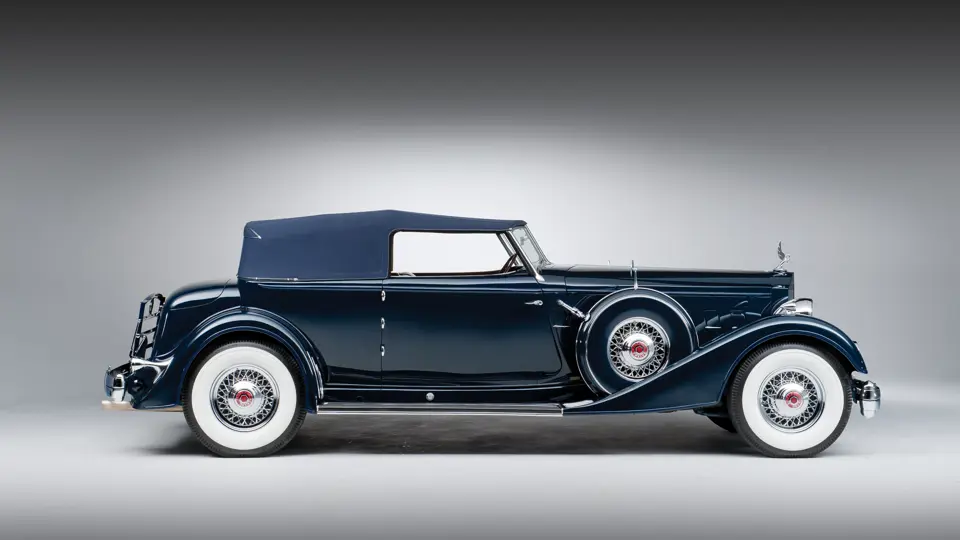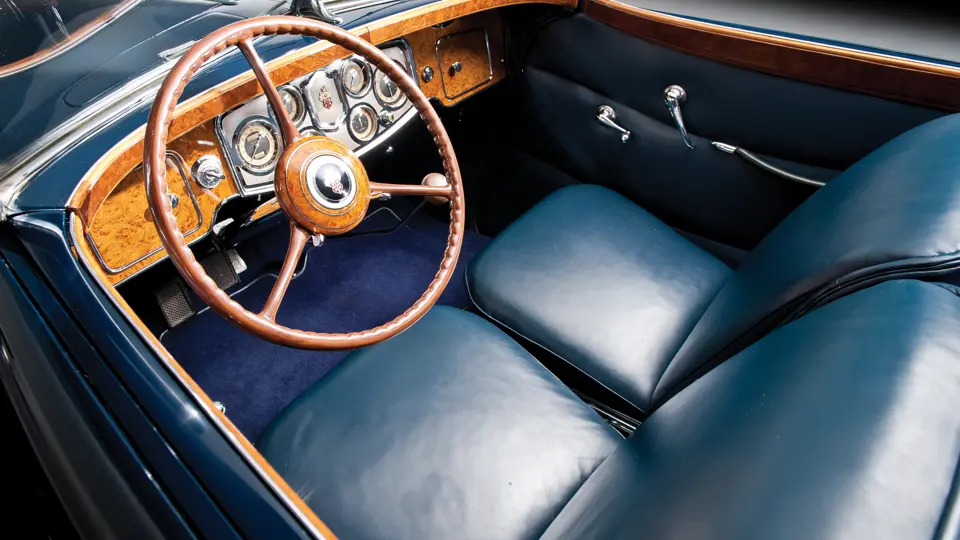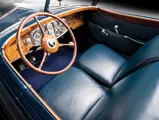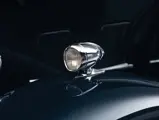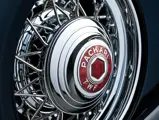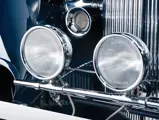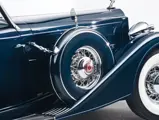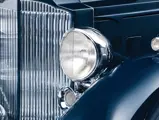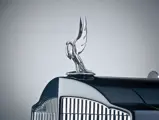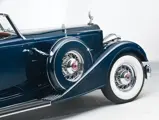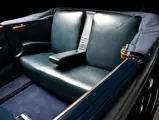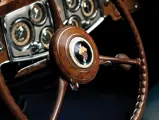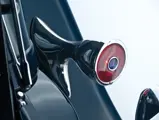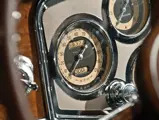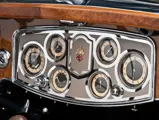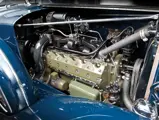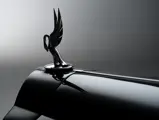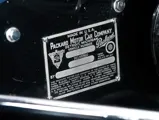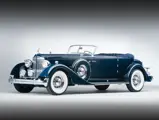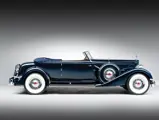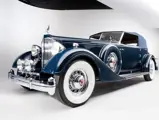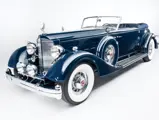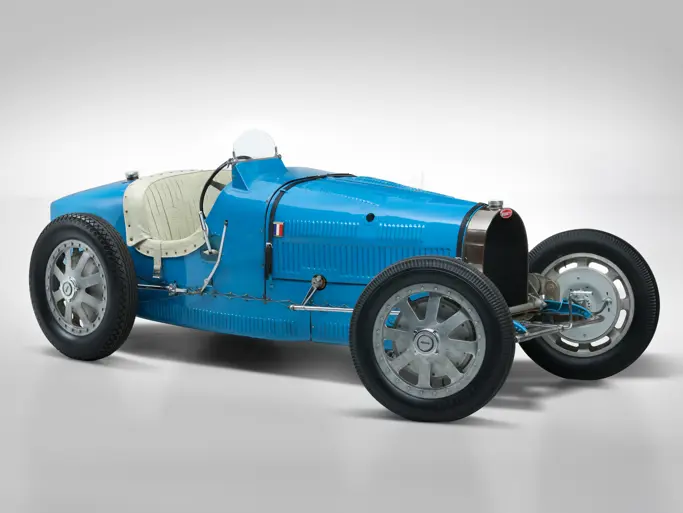Eleventh Series. Model 1108, Style 4072. 160 bhp, 445.5 cu. in. modified L-head V-12 engine, three-speed selective synchromesh manual transmission, vacuum-assisted clutch, shaft drive with hypoid rear axle, front and rear leaf-spring suspension, and four-wheel, vacuum-assisted mechanical drum brakes. Wheelbase: 147"
• One of three known examples remaining today
• The ultimate classic Packard; capable of extended touring
• Best in Class winner, 2011 Concours d’Elegance of America
• Excellent provenance including noted collectors
Some of the greatest creations of the Classic Era arrived at the very trough of the Great Depression. Nonetheless, Packard was in excellent financial health and redoubled its efforts to dominate America’s fine-car market, meeting the competitive threat from Cadillac and Lincoln head-on with the all-new, 12-cylinder Twin Six and a range of spectacular custom bodies by LeBaron and Dietrich, Inc.
Packard’s new Twelve was, in many ways, the signature car of the classic era. However, it was in a sense never meant to be. In fact, the car’s history goes back to the Cord L-29 and the great Miller front-drive racing cars. Packard management became intrigued with the idea of front drive and commissioned the construction of a prototype. The decision was made to develop a 12-cylinder engine for this new car, as the shorter length of a V-12, compared with Packard’s inline eight, allowed more flexibility in packaging the new front-drive chassis.
Extensive testing revealed weaknesses in the front-drive chassis design, and the anticipated development costs soared. Meanwhile, Cadillac ignited the multi-cylinder race with their new 16- and 12-cylinder models, and Packard dealers acutely felt the pressure. The solution, born of necessity, was to install the new 12-cylinder engine in Packard’s proven Deluxe Eight chassis. The result was christened the Twin Six, in honor of Packard’s first V-12 design, which debuted more than 15 years earlier.
By 1933, the name was changed to the Packard Twelve to clearly convey the power behind the new car. It and the Eleventh Series were the last cars with flowing fenders and classic lines, before the advent of the more highly streamlined look. The front ensemble is truly beautiful, with a graceful vee-shaped radiator shell and matching headlights and fender lights. The dash itself is a work of art, looking more like a jeweler’s display than an instrument panel.
One of the most respected designers of the classic era, Ray Dietrich was also one of the most influential. After stints at Brewster and LeBaron, he formed Dietrich, Inc., where his smart and elegant designs attracted the attention of Packard management. Soon, Packard became one of Dietrich’s best customers. Lacking an in-house styling department, Packard incorporated Dietrich design cues into its later production cars. In fact, after 1933, all open Packards built carried Dietrich body tags. Nevertheless, Dietrich still built a few custom bodies for the senior Packards, and these special cars have come to epitomize the ultimate in Classic Era styling.
The Convertible Victoria is in many respects the most desirable of the Packard custom Dietrichs. Its blind quarters give it an unsurpassed elegance, and unlike the convertible coupe, the car provides far more versatility with luxurious accommodations for up to four. Although the style was offered from 1932 through 1934, the 1934 models have proven to be the most desirable today. They are unique in many respects, offering special “wind-split” trim, a redesigned dash intended to accommodate an optional built-in radio and several chassis enhancements. The body changes, however, make the 1934s so desirable.
The hood was extended back over the cowl to the base of the windshield in an unbroken line from the radiator to the main body, lending a much longer hood than that of the earlier cars. The vent doors were beautifully curved, as were the leading edges of the doors. The combination was, and remains, quite striking, and as a result the 1934 models command substantial premiums today. Although exact numbers are not known, it is believed that as few as three and as many as four or five Style 4072 Dietrich Convertible Victorias may have been built on the Packard Twelve Model 1008 chassis, priced at a commanding $6,080 new. Only three examples are known to exist today.
This handsome and well-known example benefits from the care of several notable collectors over the years. In 1948 it was purchased in Maryland by Robert Wellcome of Westchester, New York, who recalled that he had acquired the car from a local bookmaker, who had purchased the car from a local dentist.
The dentist had bought the car for his daughter but found it too big for her to handle. At that time, he was told that the car was originally sold in the Philadelphia, Pennsylvania area. Mr. Wellcome said what impressed him most was how the seller reached into the car and touched the starter button, and it fired on the first turn. Mr. Wellcome kept the car for nine years and reluctantly sold it to Packard collector Ted Fuller. Mr. Fuller kept the car for 16 years before selling it to Frank McGowan on August 29, 1973. During the early 2000s, Mr. McGowan remembered the car’s excellent condition. Finished in black with a black leather interior, the car was original for the most part, and he recalled that the body was exceptionally solid with no rust at all.
Before long, Mr. McGowan sold the car to John Wheatley, a longtime Packard enthusiast who was one of the first to recognize the desirability of the custom Dietrich cars. He restored the car during the late-1970s or early 1980s and later passed it on to noted Texas collector Jerry J. Moore in 1984.
The car remained in Mr. Moore’s vast collection until 1996, when it was acquired by noted collector Dr. Joseph Murphy. During this period, the Convertible Victoria was featured on Pages 55 and 56 of Packard by Dennis Adler, which was published in 1998 and again in 2004.
In 1998, the Packard joined the renowned Otis Chandler Collection in Oxnard, California, where it remained on display for four years before Dave Kane of Bernardsville, New Jersey acquired it in 2002. Mr. Kane recently confirmed that when he and Rich Fass of Stone Barn Restorations had examined the car in detail, the Dietrich body was indeed original to the car, and both its wooden framing and the body’s overall integrity were particularly impressive. Noted collectors Joseph Cassini III and Margie Cassini acquired the Convertible Victoria during the summer of 2004, and under them, a new navy blue convertible top was fitted by RM Auto Restoration. In 2006, the current owner acquired the car and fitted a set of chrome wheels and new wide whitewall tires and also commissioned the rewiring of the electrical system.
The excellent driving dynamics of the car were once again confirmed during a long-distance tour from Seattle, Washington to Pebble Beach—a journey which was anticipated to be 1,500 miles but grew to some 1,700 miles as a result of highway detours around forest fires sweeping parts of Oregon. On its return to the show field at the 2011 Concours d’Elegance of America at St. John’s, the Dietrich Convertible Victoria was awarded Best in Class, Classic Era Open 1934-1942.
Today, despite the age of the restoration, the car remains in wonderful overall condition, reflecting the excellent care it has received over the years. Reluctantly, the current owner is now selling the car to reduce the size and complexity of his private collection. In addition to its excellent color combination and the aforementioned navy blue convertible top, the Twelve is handsomely complemented by such desirable period features as dual side-mounted spare tires with covers and accessory mirrors, the aforementioned chrome wire wheels with whitewall tires and twin Pilot Ray driving lights.
In the world of American Classics, some cars stand out as being among the very best of the best; this is just such a car. Its lines are without fault, and its still-wonderful present condition permits it to be shown or driven. As one of three known examples, and especially with its Dietrich Convertible Victoria body and majestic long-wheelbase chassis, it may very well represent a once-in-a-lifetime opportunity for collectors of the finest, rarest and most inspired automotive masterpieces of the Classic Era.
Please note this vehicle is titled by its engine number.

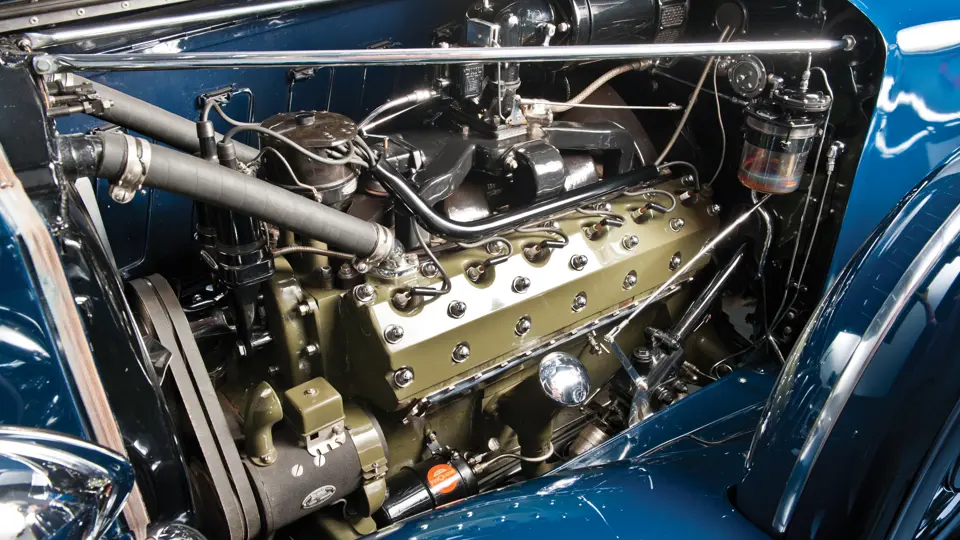


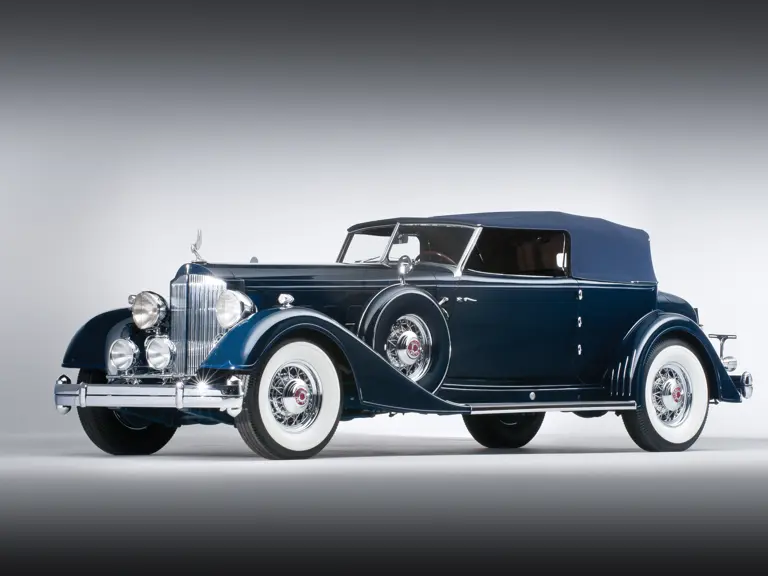
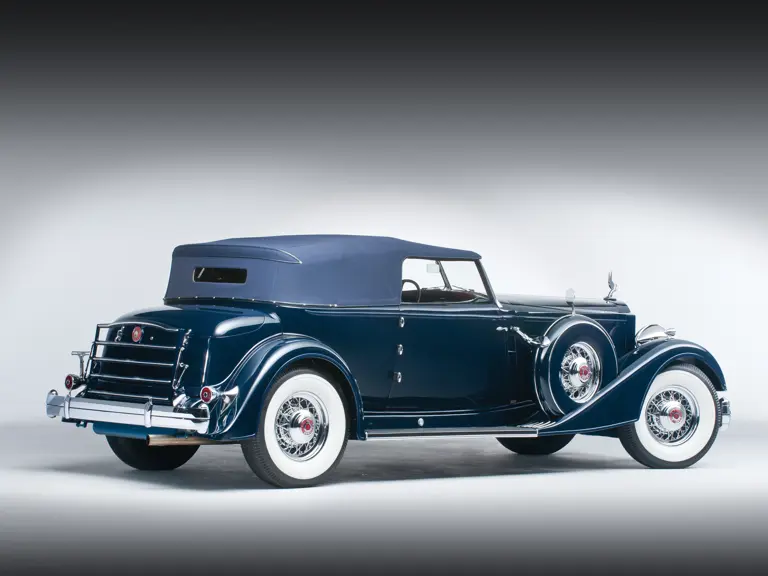
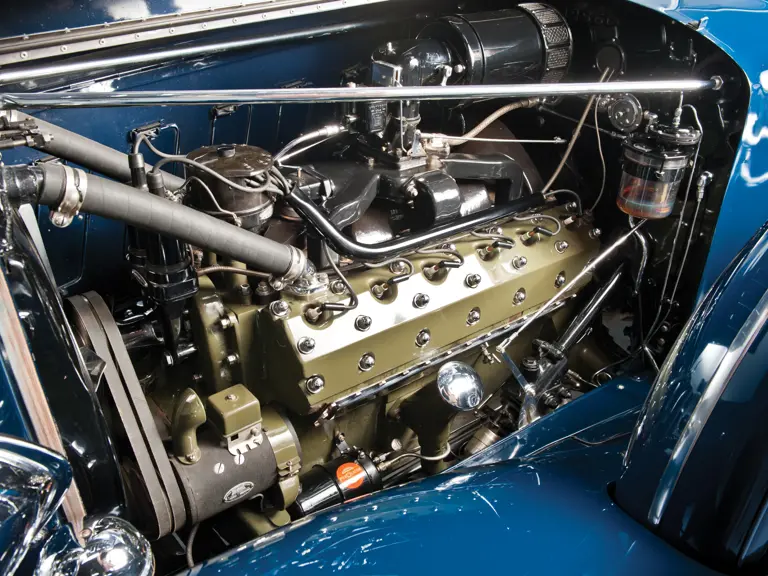
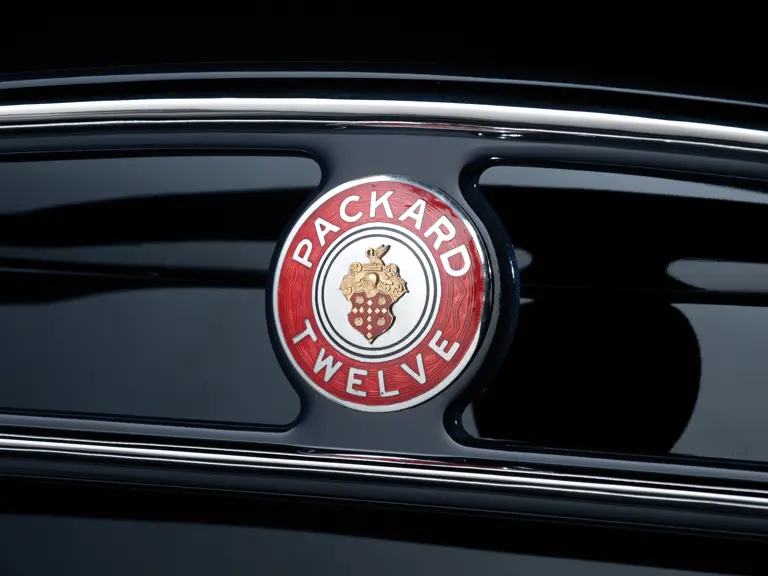
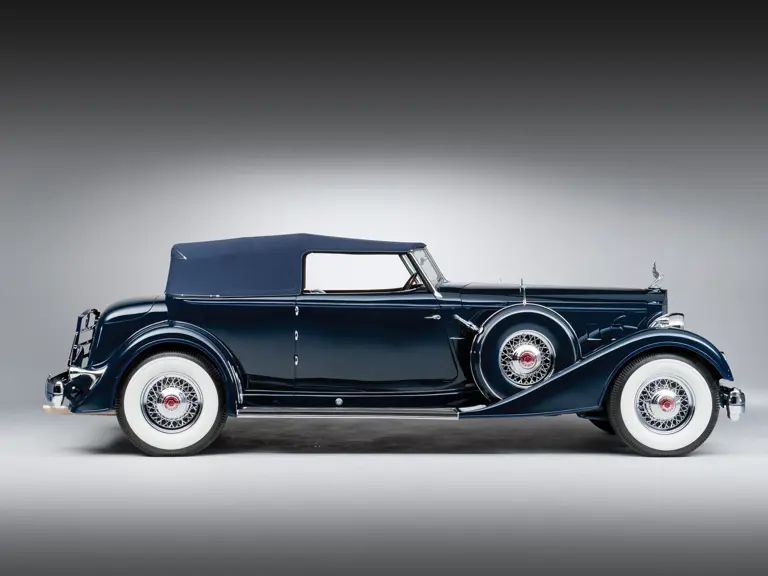
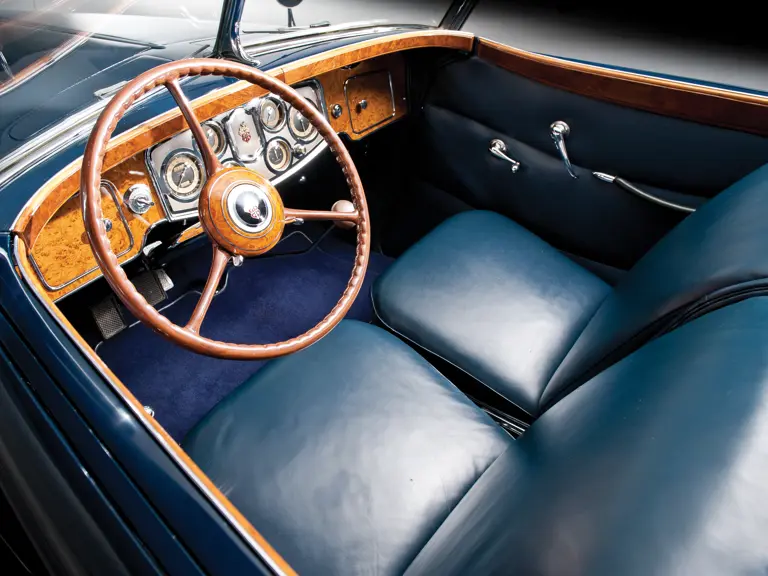
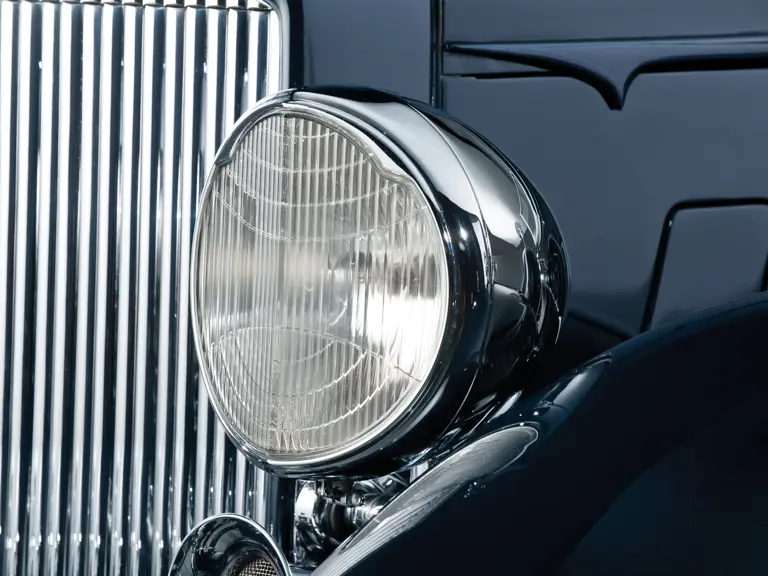
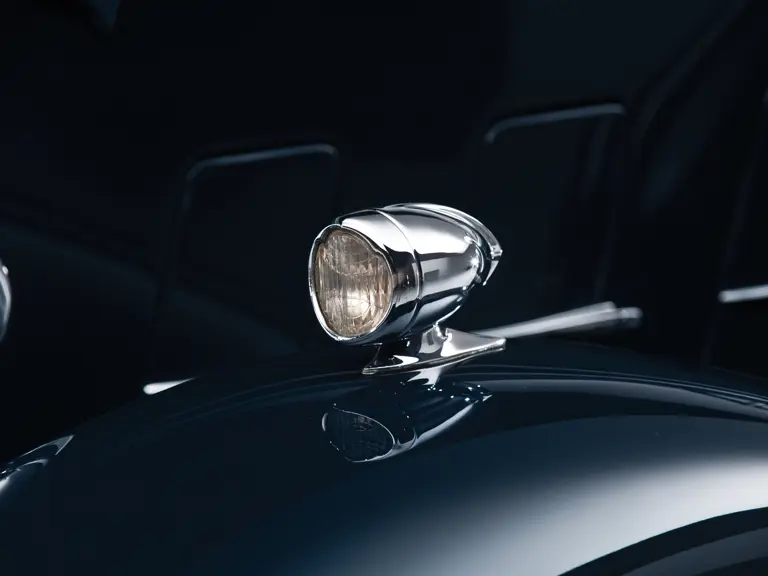
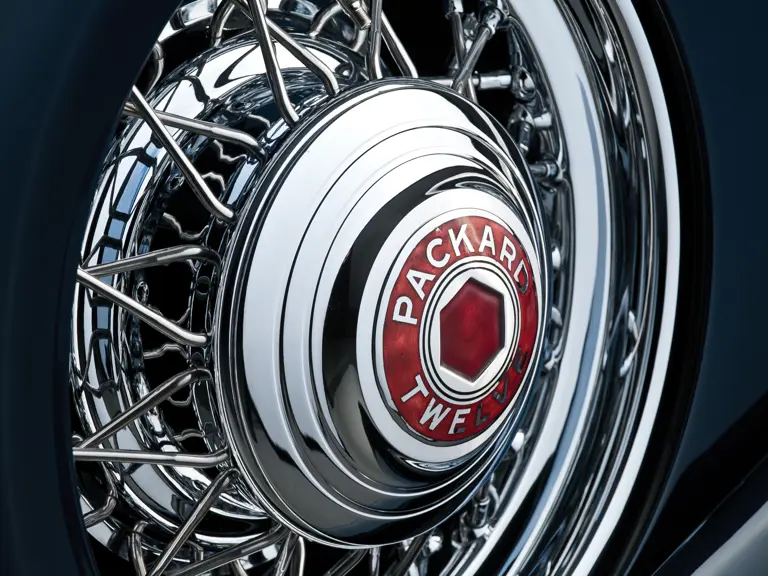
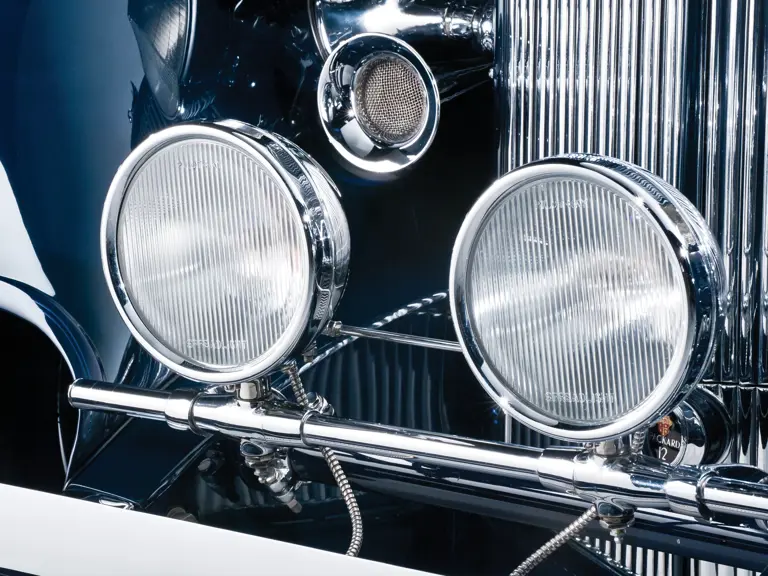
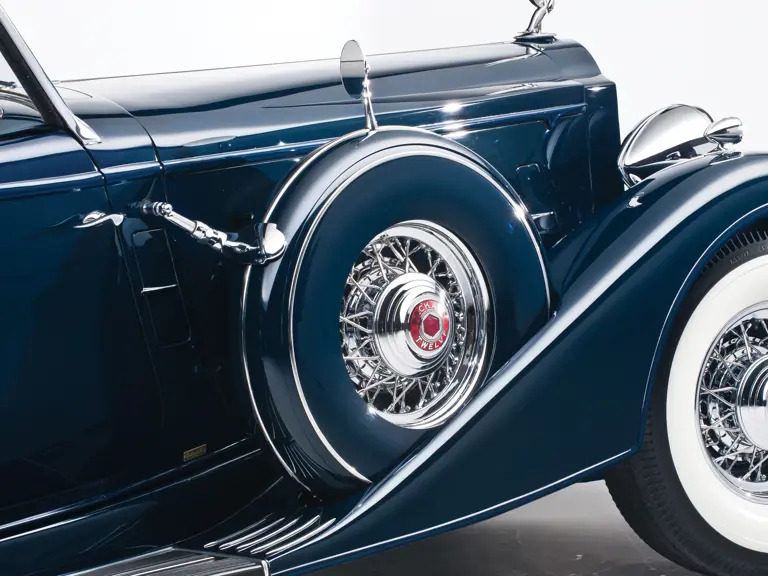

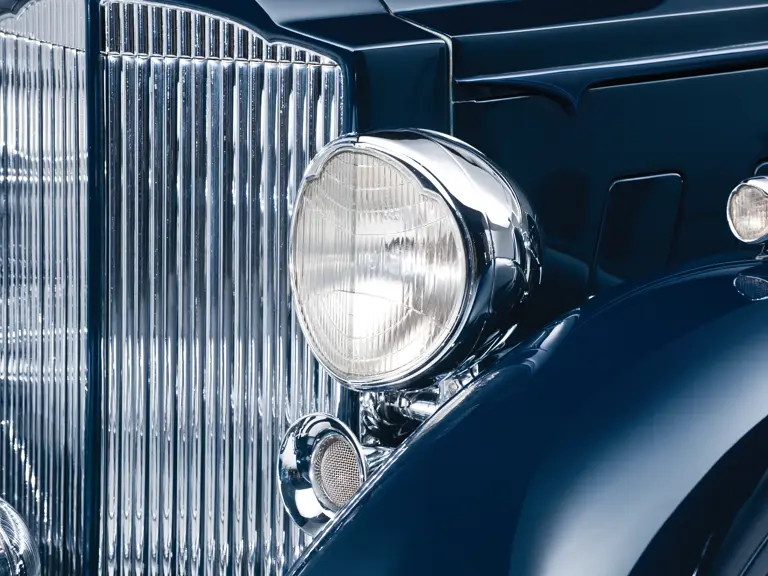


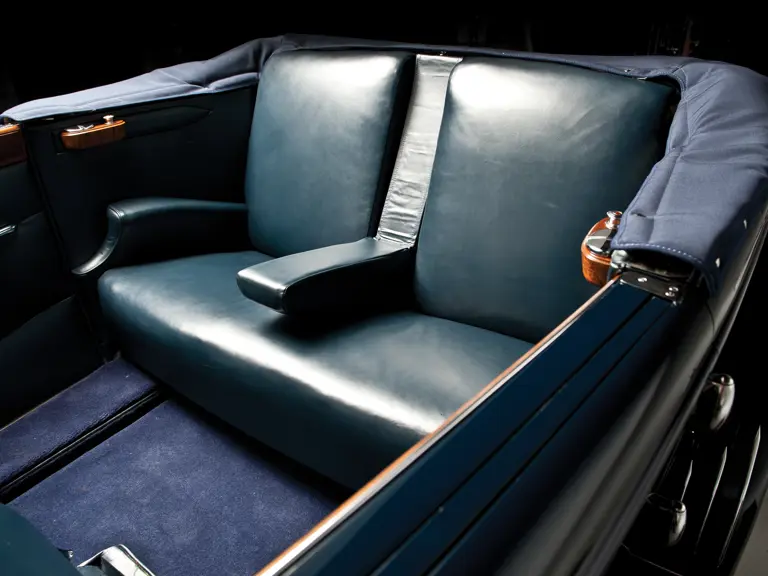
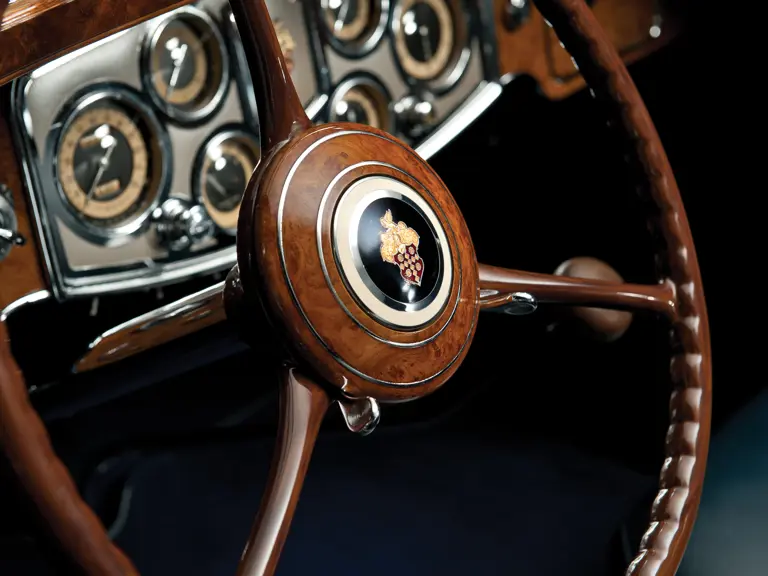
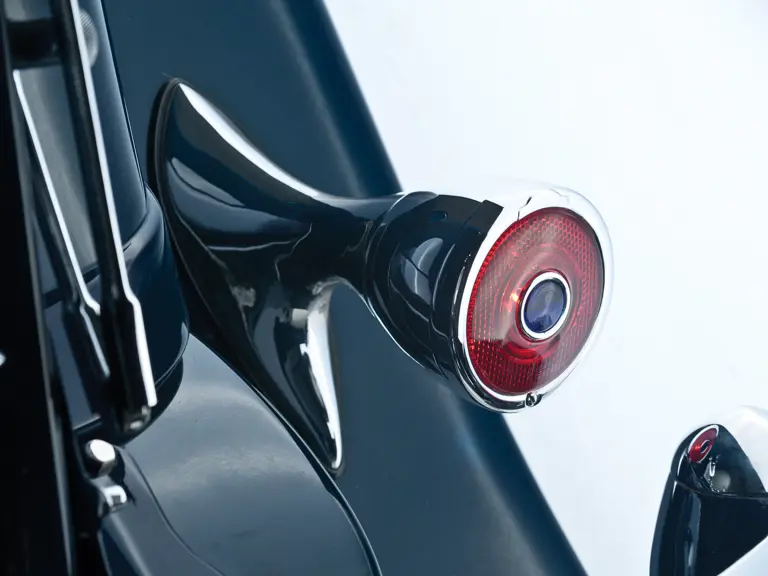
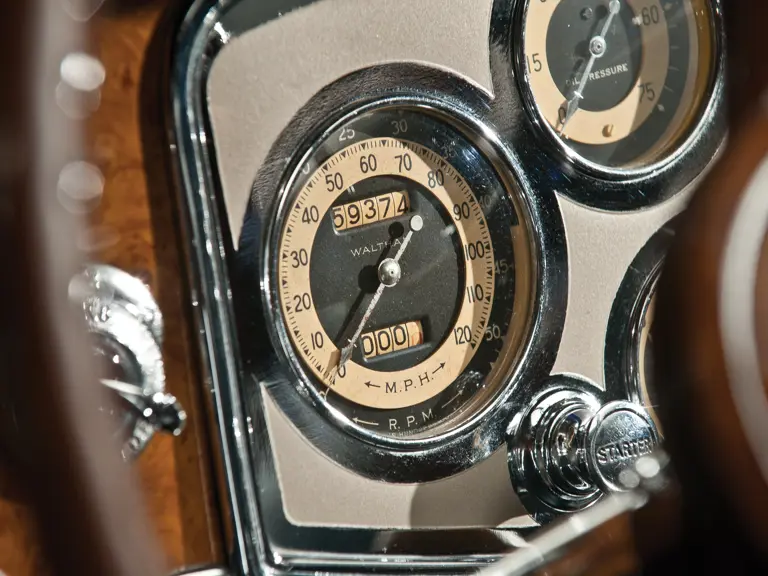
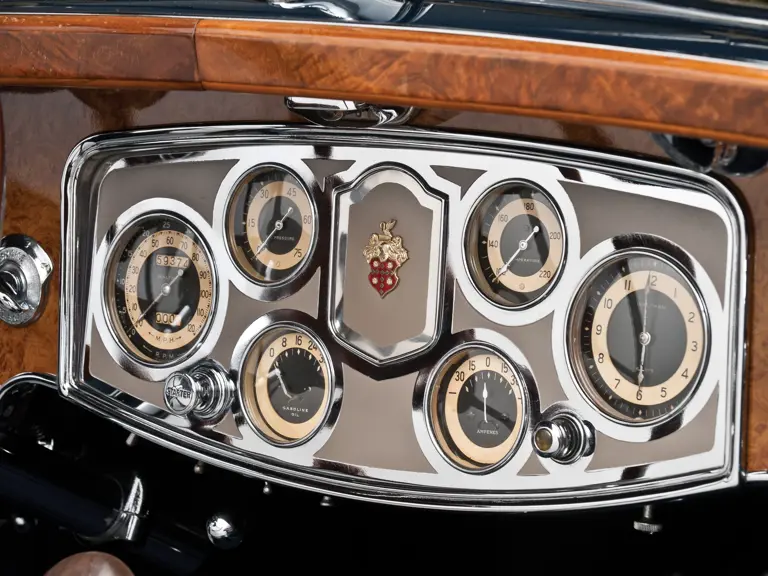
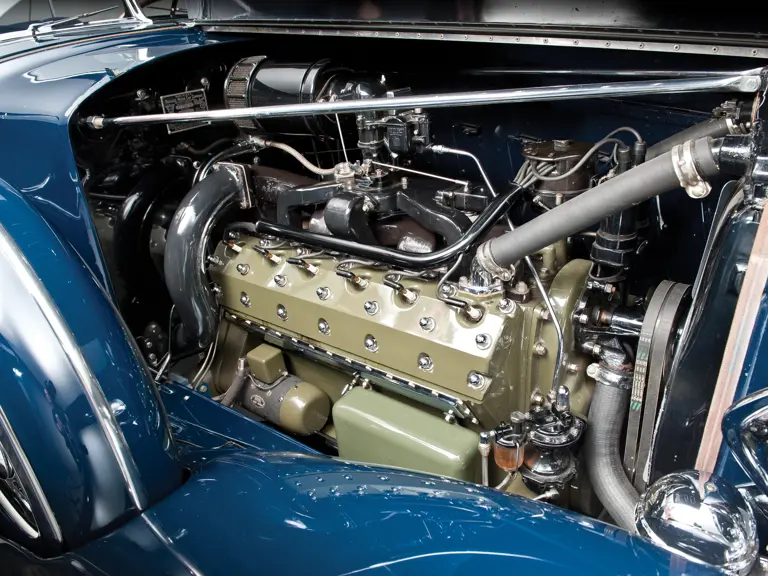

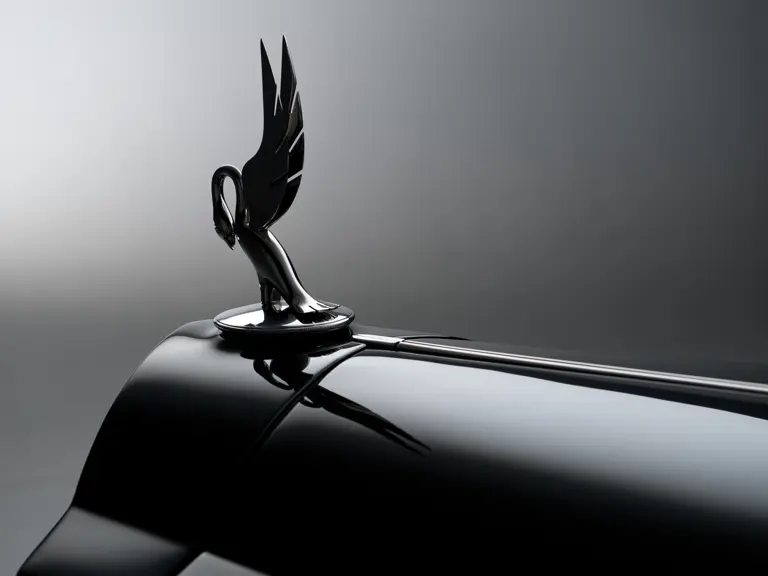
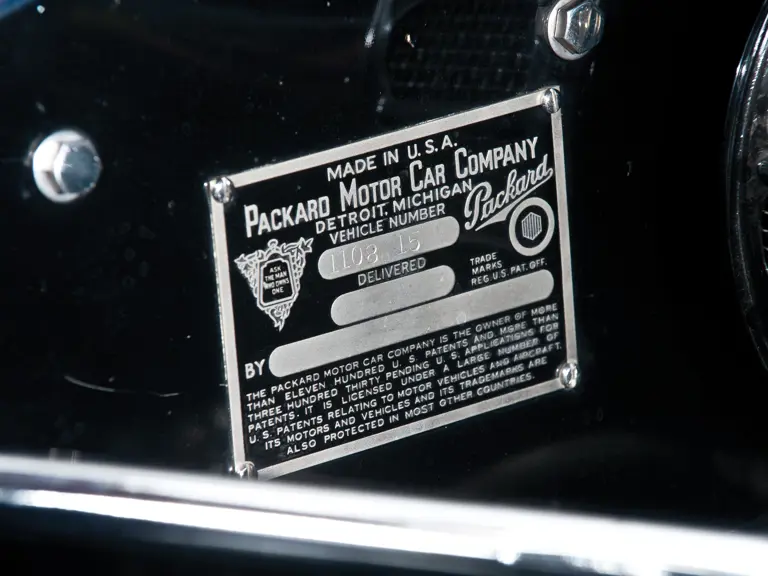
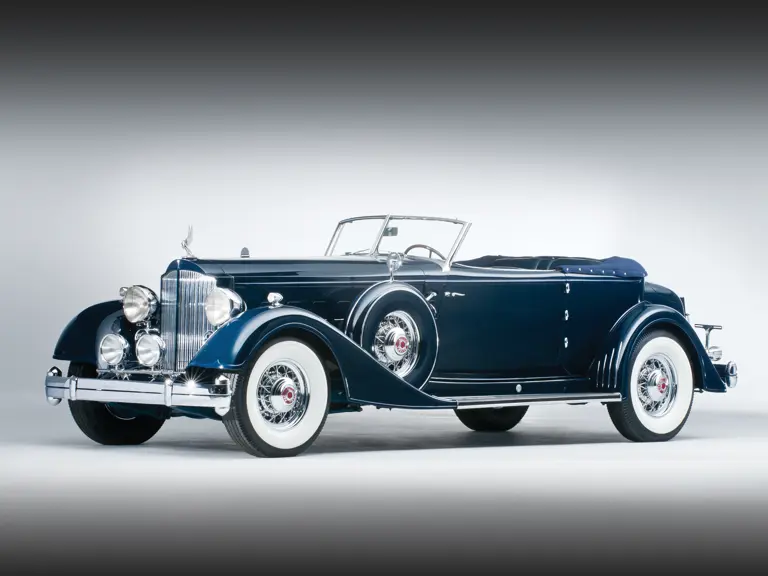
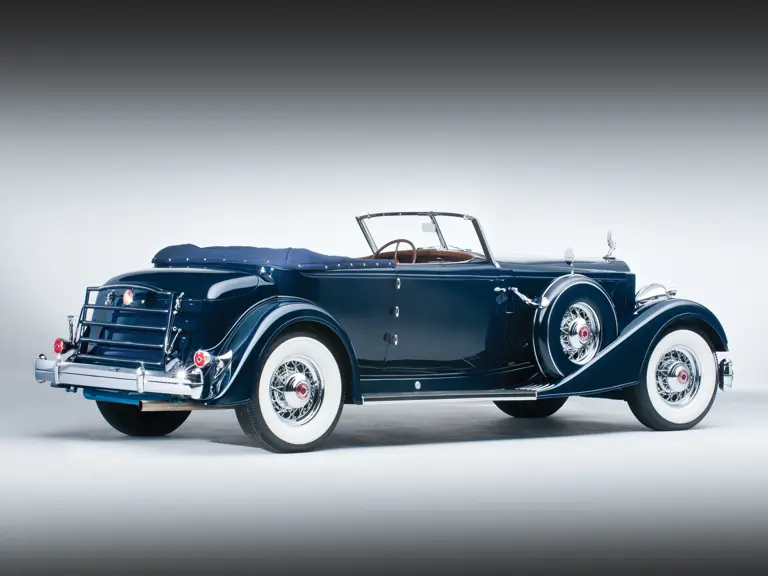
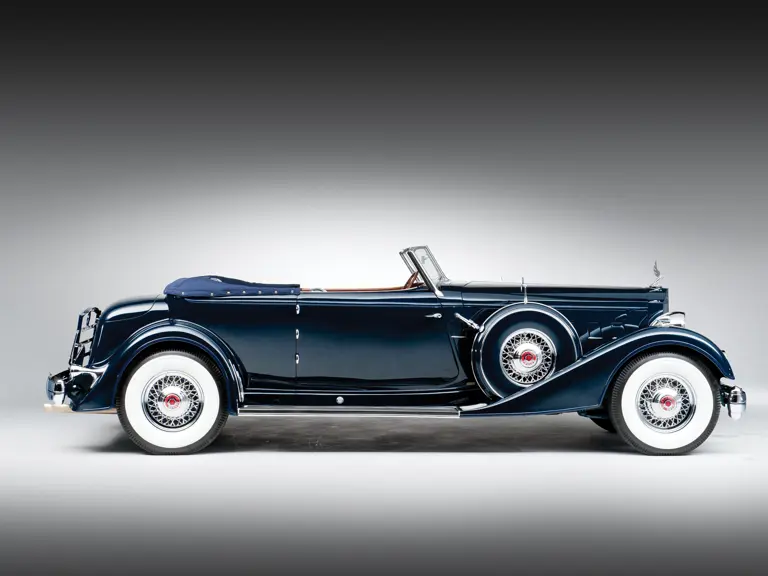
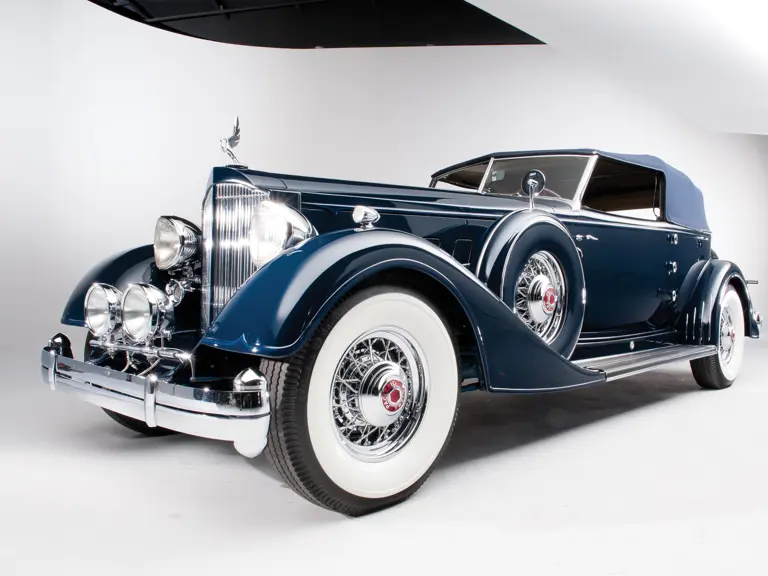
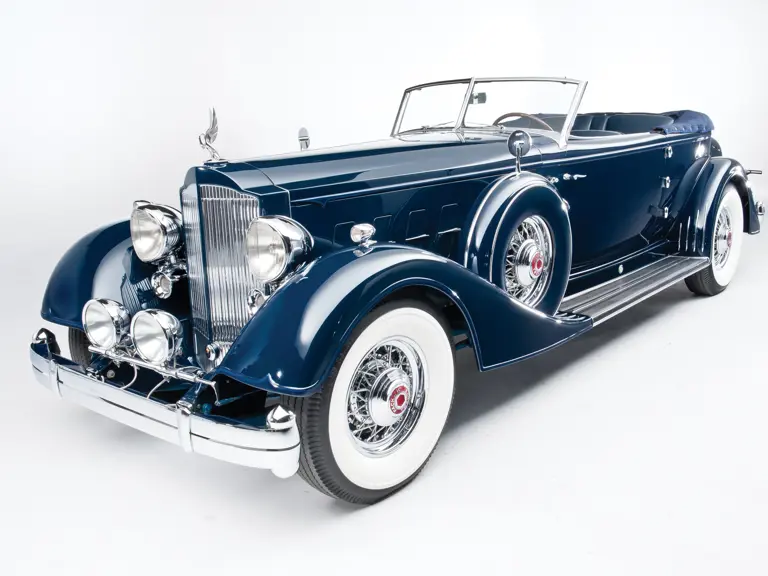
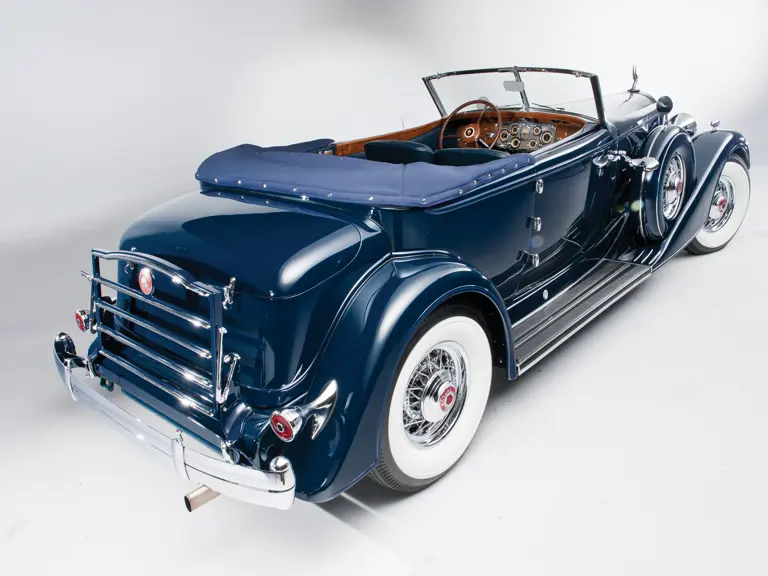
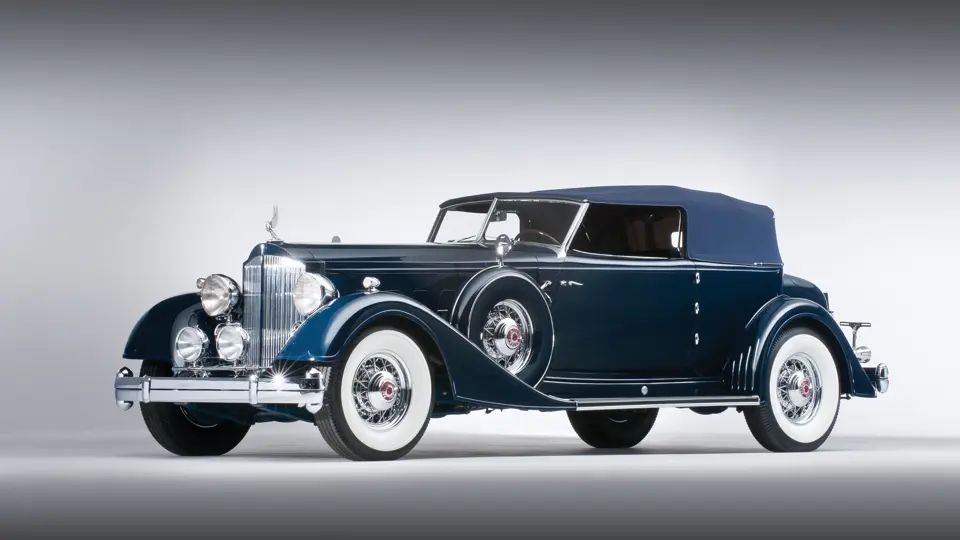
 | Amelia Island, Florida
| Amelia Island, Florida
